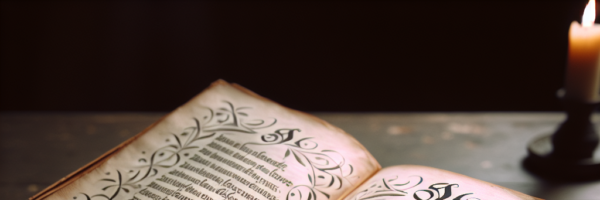Shake-speares Sonnets was entered in the Stationers’ Register on Saturday 20 May 1609; the record reads,
20 Maij Thomas Thorpe. Entred for his copie vnder thandes of master Wilson and master Lownes Warden a Booke called Shakespeares sonnettes vjd.
The cost of sixpence would have been normal. The volume’s frontispiece bears the date, 1609, and the place, London, and declares forthrightly, “Neuer before Imprinted.” It was printed by George Eld for “T. T.,” evidently the publisher Thomas Thorpe. The volume appeared with two-title pages, one with the imprint of the book-seller, John Wright, and one with that of another, William Aspley. The subsequent dedicatory page is signed, “T. T.,” again Thomas Thorpe. The dedication is solecistic, a trait of Thorpe’s writing, and is addressed to “MR. W. H.,” whose identity has been the subject of debate and acrimony from Ben Jonson onwards.
The publication of Shakespeare’s sonnet sequence came late in the piece: by 1609 the vogue of sequences which had flourished in the 1590s and early 1600s in the wake of Sir Philip Sidney’s Astrophil and Stella sequence had passed. Yet some of Shakespeare’s sonnets were written before 1599, because Francis Meres, when pairing a range of accomplished English writers with Latin precursors in 1598, coupled Shakespeare with Ovid and alluded to “his sugred Sonnets among his priuate friends:
”As the soule of Euphorbus was thought to liue in Pythagoras: so the sweete wittie soule of Ouid liues in mellifluous & hony-tongued Shakespeare, witnes his Venus and Adonis, his Lucrece, his sugred Sonnets among his priuate friends, &c.1
As well, versions of Sonnets 138 and 144 had appeared in a rather tawdry, unauthorized volume published by William Jaggard in 1599 and entitled The Passionate Pilgrime. By W. Shakespeare. (The majority of the volume’s poems are not by Shakespeare.)
The sequence is divided between those generally directed to a youth (Sonnets 1-126) and those generally addressed to a ‘Dark Lady’ (Sonnets 127-152); there are two further sonnets, Sonnets 153-54, which are anacreontic sonnets. The sonnets as printed do not necessarily reflect the order of the composition as recent stylometric work advanced by Kent Hieatt and others and refined by MacD. Jackson has demonstrated.2 By comparing early and late ‘rare’ words in sonnets and plays Hieatt and Jackson have concluded that statistical analysis and comparative ratios indicate that the final section of sonnets, those to the Dark Lady are of early composition, probably in the period 1595-96. The inclusion among them of Sonnets 138 and 144 and of the anomalous Sonnet 145, which, if Andrew Gurr is correct, was written early to Anne Hathaway, supports the conclusion.3 The remainder of the sonnets were composed during the latter half of the 1590s, with the exception of Sonnets 104-26, which were written in the early years of the 17th century. Sonnet 107 and Sonnets 123-25 allude to events that occurred around 1603 and 1604, so must have been written after those events. Sonnet 107 refers to the death of Elizabeth and the “balmie time,” brought about by the accession of James I in 1603; Sonnet 125 alludes to the coronation of James in 1603, Sonnet 123 to the royal procession in 1604 (15 March 1603 o.d.), that celebrated the coronation, and Sonnet 124 to the “Bye” and “Main” plots, conspiracies against James that occurred in 1603, which culminated in trials and executions (staged and otherwise) in December 1603. The sonnets, then, were written over a span of years and there is no reason not to accept that Shakespeare followed the practice of his fellow sonneteers, who continually revised their sonnets and sequences: Samuel Daniel, the author of the sequence, Delia, was an habitual fiddler and Michael Drayton’s sequence, Ideas Mirrour. Amours in Quatorzains, underwent constant revision as new editions were issued, only 20 of the original 51 sonnets found in the 1594 edition surviving in the 1637 edition. In Shakespeare’s case earlier sonnets such as Sonnets 138 and 144 were reworked afterwards, while later sonnets themselves would have been revised, perhaps with printing in mind.
